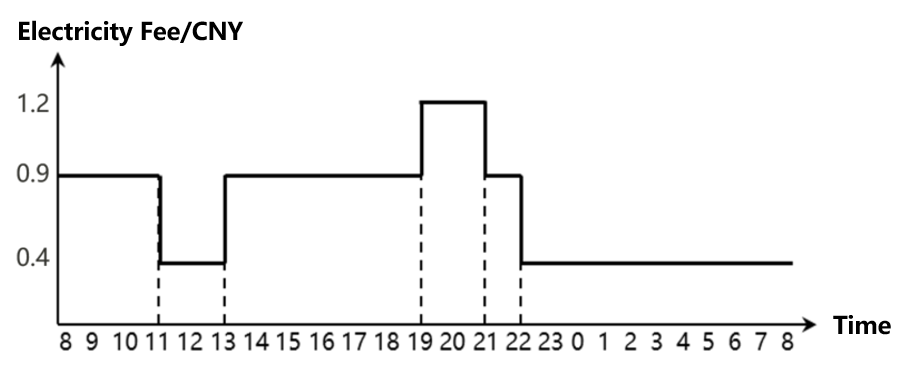Huawei iSitePower Intelligent Peak Staggering Practice at China Tower Is Included in GSMA Case Study
After 5G is deployed, the power consumption and number of base stations increase significantly, and so does the carrier operational expenditure (OPEX). China Tower Zhejiang Branch and Huawei worked together and used iSitePower AI technologies to implement intelligent peak staggering at base stations, reducing electricity costs by 17.1% per site per year while ensuring reliable backup power. On July 26, 2021, this innovative practice was selected as a global best case by Global Association for Mobile Telecommunications (GSMA) for its remarkable electricity cost savings.
To improve the power utilization efficiency, power suppliers formulates peak-valley tariffs (that is, different tariffs are implemented in different time periods) based on the load changes of the power grid, so as to encourage users to rationally arrange the power consumption time and shift loads to off-peak periods. Batteries in traditional solutions are used only for emergency backup and have not become a production tool. Instead, they are idle assets not fully utilized. China Tower Zhejiang Branch and Huawei iSitePower launched the intelligent peak staggering technology to improve battery utilization and reduce electricity fees for base stations by leveraging peak-valley tariffs. The principle is to charge batteries when electricity price is lower, and let the batteries instead of the grid supply power when electricity price is higher. Intelligent peak staggering can reduce power consumption costs while balancing grid loads, bringing significant economic and social benefits.

Peak-valley electricity tariffs in Zhejiang Province
Challenges facing peak staggering
One important function of batteries is providing backup power. The backup power requirements must be met after the batteries are used for peak staggering. Therefore, the peak staggering strategies must be accurate to ensure reliable backup power and maximize benefits. Battery backup duration is affected by factors such as load power, battery SOC, and battery wear level. The load power, battery capacity, and health status of different sites vary greatly and are constantly changing. Manual analysis and calculation cannot formulate accurate peak staggering strategies (battery charge/discharge duration and depth of discharge). If a single peak staggering model is used in all sites, the sites might either fail to provide adequate backup power due to battery overdischarge or unable to maximize the benefits due to low depth of discharge.
Principles of intelligent peak staggering
To address these challenges, Huawei applies AI technologies to formulate optimal peak staggering strategies. The Huawei energy management system uses AI technologies to build a grid supply model, load power model, and battery capacity model. The system can predict load power, calculates the required backup capacity based on the backup duration of each site, reserves the required backup capacity, and uses redundant battery capacity to stagger the peak, implementing dynamic peak staggering at different sites and time. Huawei intelligent peak staggering reserves sufficient backup capacity to ensure service continuity while maximizing revenue.
Value analysis: Intelligent peak staggering reduces base station electricity fees by 17.1% per year.
After intelligent peak staggering is used at sites of China Tower Zhejiang Branch, electricity cost is reduced by US$280 (17.1%) per site per year. Intelligent peak staggering helps China Tower unleash the value of batteries. Batteries are discharged during peak hours to save electricity costs. More importantly, the intelligent feature has no impact on backup power reliability.

iSitePower intelligent peak staggering Schematic diagram
The AI-based load power analysis model features high power prediction accuracy, ensuring backup power reliability. In sites with small load fluctuation, the average error of AI load power prediction is just 1.1%. In addition, charging and discharging strategies are optimized to balance energy saving benefits and reliability. Intermittent discharge is automatically selected to control battery temperature rise and prolong battery life. Highly accurate dynamic prediction can also be achieved at sites with large fluctuation of load power, and the average error of load prediction accuracy is 5.7%.
By integrating digital and power electronics technologies, intelligent peak staggering enables optimal energy scheduling for base stations, optimizes power utilization, and reduces electricity fees. In the context of carbon emission peak and carbon neutrality targets, this innovative practice is a technical and commercial demonstration for cost reduction and efficiency improvement and energy transformation in the communications industry, and is of great significance.
Note: GSMA is an industry organization in the global mobile communications field, bringing together more than 750 carriers and nearly 400 companies worldwide. It is also the organizer of Mobile World Congress and Mobile Asia Expo.







